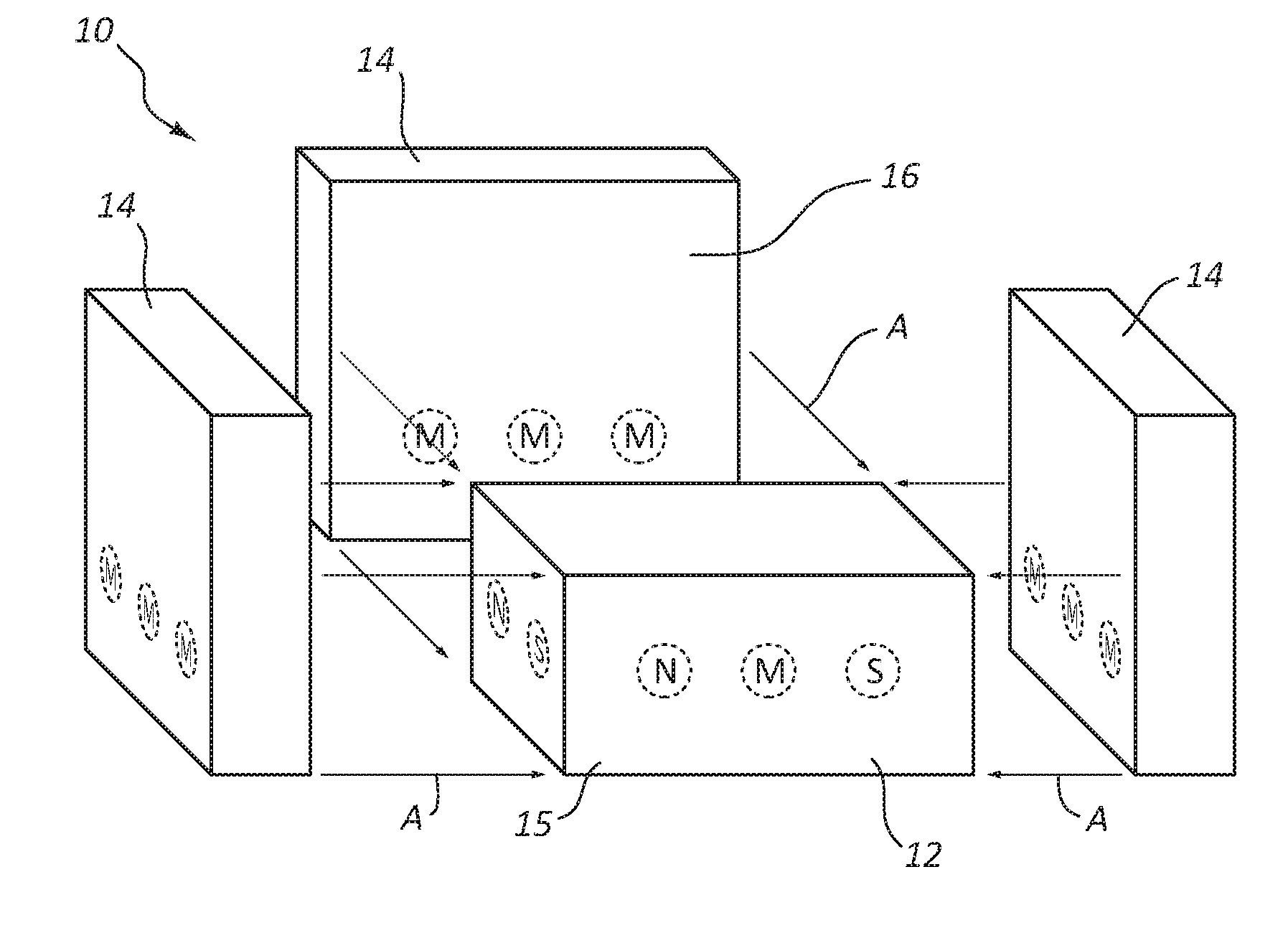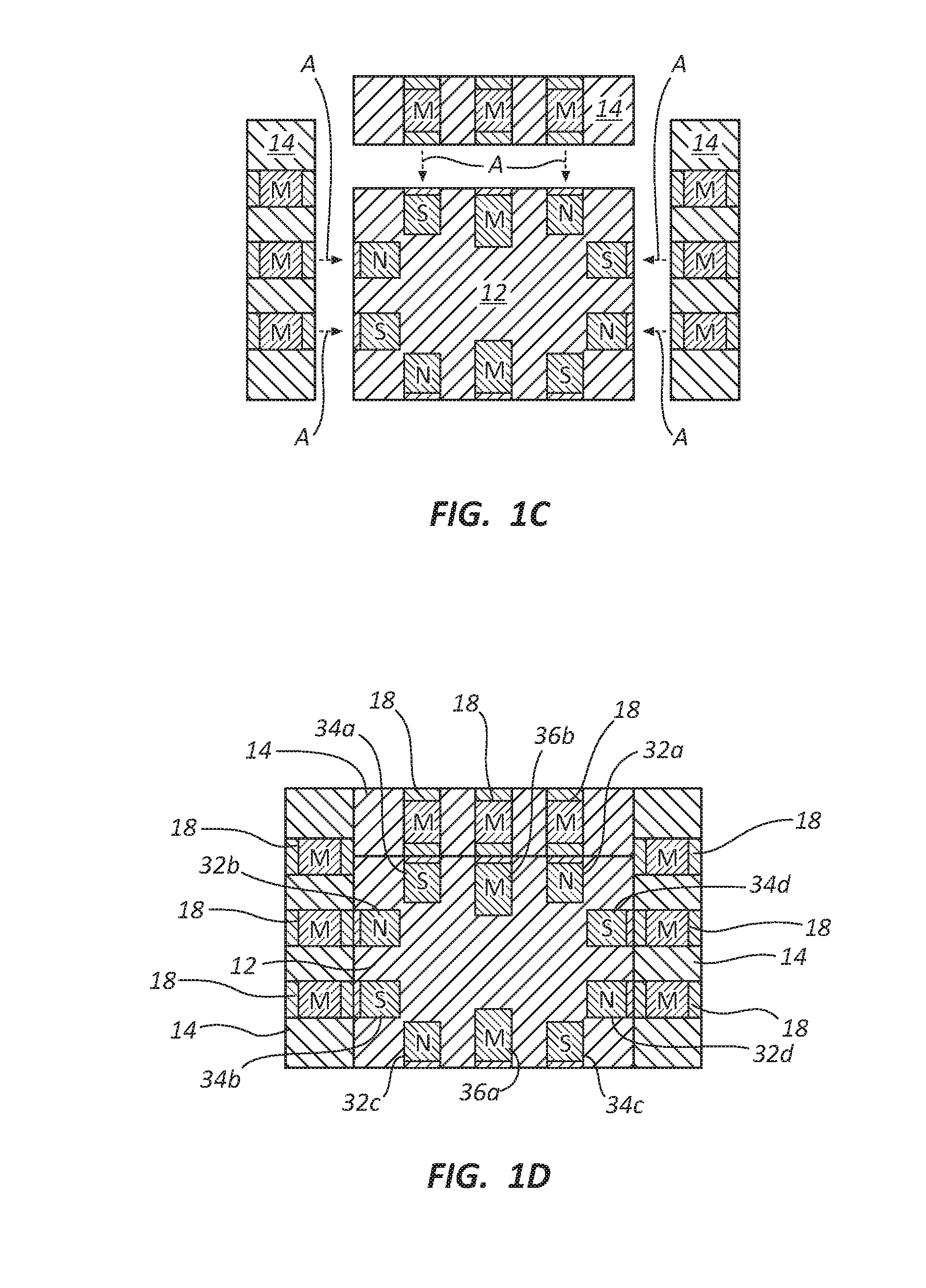Modular furniture assembly with dual coupling mechanisms
a technology of coupling mechanism and modular furniture, which is applied in the direction of convertible stools, magnetic bodies, chairs, etc., can solve the problems of inconvenient connection between modular furniture pieces, requiring too many steps, and many traditional couches and other furniture items cannot be moved into tight areas of homes or apartment complexes, so as to reduce, minimize or prevent tenting of fabric or other covers, reduce or eliminate slack within the tethered construction chain
- Summary
- Abstract
- Description
- Claims
- Application Information
AI Technical Summary
Benefits of technology
Problems solved by technology
Method used
Image
Examples
Embodiment Construction
[0063]FIGS. 1A-5D are schematic representations of a modular furniture assembly with a magnetically attractive coupling assembly (also referred to herein as a magnetic coupling assembly), illustrating how the magnets and / or attracted members may be arranged so as to allow selective, removable coupling of the various members in variously configured modular furniture assemblies.
[0064]FIG. 1A shows an assembly 10 with a magnetic coupling assembly, while FIG. 1B is a view of the furniture assembly 10 of FIG. 1A in an assembled configuration. FIGS. 1C and 1D show possible positions of magnets and / or attracted members in the base member and transverse members for the assembly 10 of FIGS. 1A and 1B.
[0065]Modular furniture assembly 10 comprises a base member 12 and three transverse members 14 that are selectively, removably coupled by a magnetic coupling assembly to base member 12. The magnetic coupling assembly is comprised of at least one magnet and at least one attracted member, e.g., an...
PUM
 Login to View More
Login to View More Abstract
Description
Claims
Application Information
 Login to View More
Login to View More - R&D
- Intellectual Property
- Life Sciences
- Materials
- Tech Scout
- Unparalleled Data Quality
- Higher Quality Content
- 60% Fewer Hallucinations
Browse by: Latest US Patents, China's latest patents, Technical Efficacy Thesaurus, Application Domain, Technology Topic, Popular Technical Reports.
© 2025 PatSnap. All rights reserved.Legal|Privacy policy|Modern Slavery Act Transparency Statement|Sitemap|About US| Contact US: help@patsnap.com



